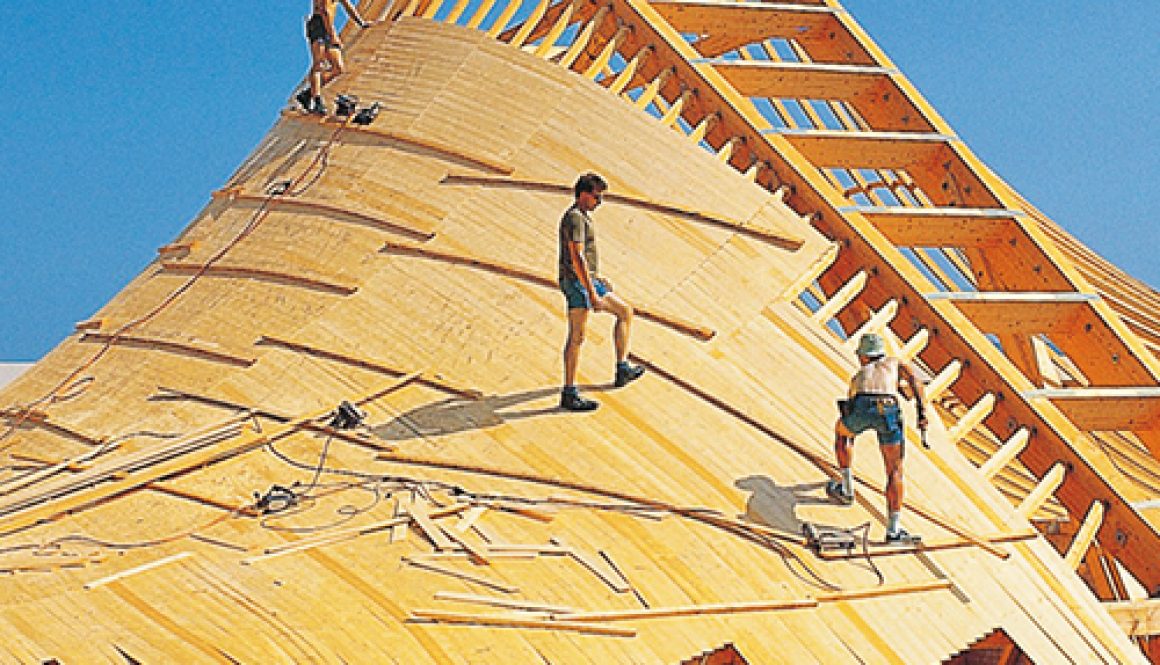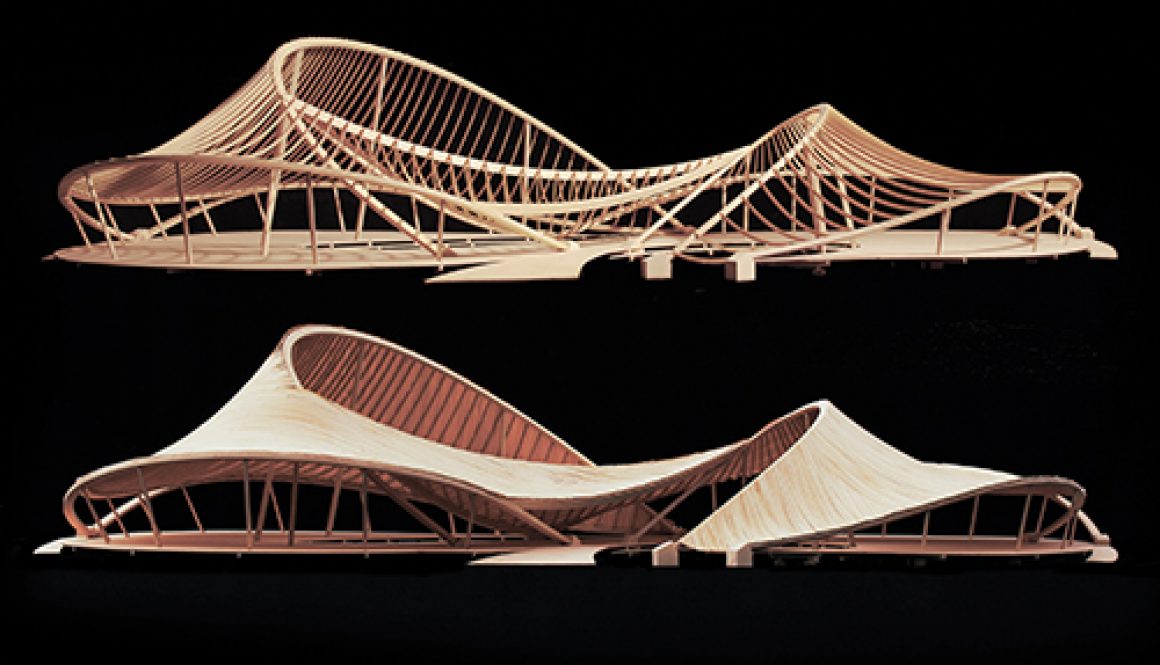Catenary Wooden Roof Structures…
Conference Paper: Peer Reviewed
Catenary Wooden Roof Structures : Precedent Knowledge for Future Algorithmic Design and Construction Optimisation
N.Wong and K.Crolla
ABSTRACT |The timber industry is expanding, including construction wood product applications such as glue-laminated wood products (R. Sikkema et al., 2023). To boost further utilisation of engineered wood products in architecture, further development and optimisation of related tectonic systems is required. Integration of digital design technologies in this endeavour presents opportunities for a more performative and spatially diverse architecture production, even in construction contexts typified by limited means and/or resources. This paper reports on historic precedent case study research that informs an ongoing larger study focusing on novel algorithmic methods for the design and production of lightweight, large-span, catenary glulam roof structures. Given their structural operation in full tension, catenary-based roof structures substantially reduce material needs when compared with those relying on straight beams (Wong and Crolla, 2019). Yet, the manufacture of their non-standard geometries typically requires costly bespoke hardware setups, having resulted in recent projects trending away from the more spatially engaging geometric experiments of the second half of the 20th century. The study hypothesis that the evolutionary design optimisation of this tectonic system has the potential to re-open and expand its practically available design solution space. This
paper covers the review of a range of built projects employing catenary glulam roof system, starting from seminal historic precedents like the Festival Hall for the Swiss National Exhibition EXPO 1964 (A. Lozeron, Swiss, 1964) and the Wilkhahn Pavilions (Frei Otto, Germany, 1987), to contemporary examples, including the Grandview Heights Aquatic Centre (HCMA Architecture + Design, Canada, 2016). It analysis their structural concept, geometric and spatial complexity, fabrication and assembly protocols, applied construction detailing solutions, and more, with as aim to identify methods, tools, techniques, and construction details that can be taken forward in future research aimed at minimising construction complexity. Findings from this precedent study form the basis for
the evolutionary-algorithmic design and construction method development that is part of the larger study. By expanding the tectonic system’s practically applicable architecture design solution space and facilitating architects’ access to a low-tech producible, spatially versatile, lightweight, eco-friendly, wooden roof structure typology, this study contributes to environmentally sustainable building.
KEYWORDS |Precedent Studies, Light-weight architecture, Timber shell, Catenary,
Algorithmic Optimisation, Glue-laminated timber
CITATION |Crolla, K. and Wong, N. (2023) ‘Catenary wooden roof structures: Precedent knowledge for future algorithmic design and construction optimisation’, in Dokonal, W, Hirschberg, U and Wurzer, G (eds.), Digital Design Reconsidered – Proceedings of the 41st Conference on Education and Research in Computer Aided Architectural Design in Europe (eCAADe 2023) – Volume 1, Graz, 20-22 September 2023, pp. 611–620










